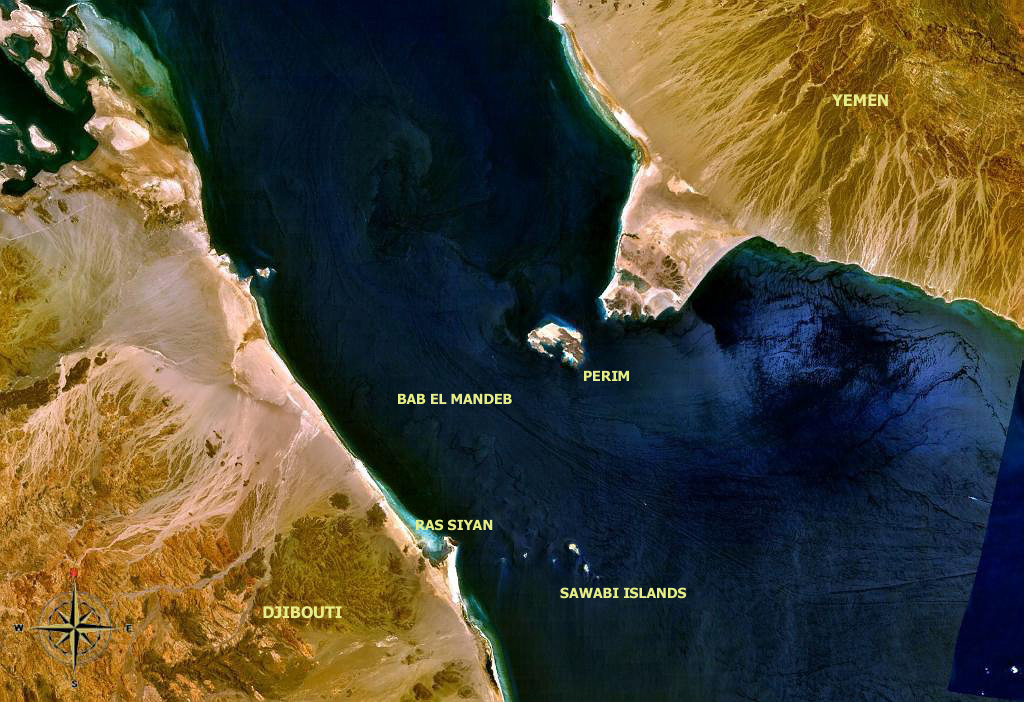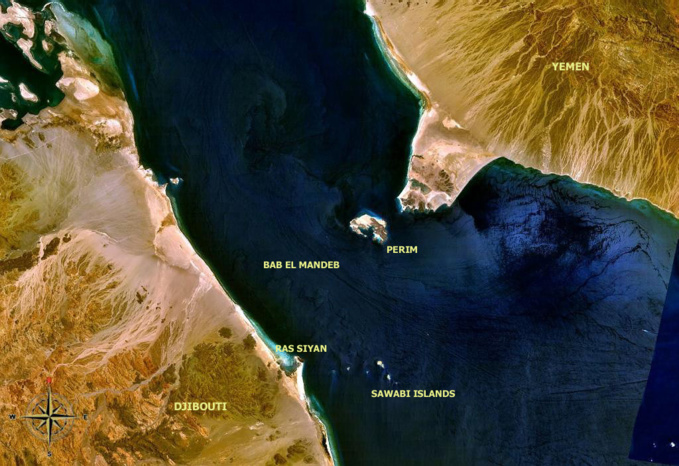Last week was marked by alarming news from the Middle East, which could have a serious impact on the oil markets. First, Iranian President Hassan Rouhani, along with one of the commanders of the Iranian Revolutionary Guards Corps, announced possible blocking of the Strait of Hormuz, through which a large part of the world's oil exports pass. Then, no less disturbing news came from the west of the Arabian Peninsula.
After Houthis attacked two tankers in the Bab-el-Mandeb Strait, which connects the Red Sea with the Gulf of Aden, Riyadh suspended shipping on this important waterway for three days. Exports of Arabian oil through the strait reach 500-700 thousand bpd. The EIA states that an average of 4.8 million bpd passed through the Bab-el-Mandeb Strait in 2016. Closure of the strait between the Red Sea and the Gulf of Aden will force tankers to skirt the southern limb of Africa and extend the route by 4.3 thousand km, which will lead to both an increase in transportation time and growing costs.
Oil Price writes that nearly 19 million barrels of crude oil pass are shipped the Strait of Hormuz every day, which is about a fifth of global exports. In combination with liquefied gas (LNG), the share of energy carriers passing through this strait, which connects the Oman and Persian Gulfs, increases to almost a third. More than 85% of the oil transported through the Strait of Hormuz is sent to Asia, mainly to Japan, India, South Korea and China.
Both Saudi Arabia and the United Arab Emirates (UAE) have oil pipelines through which they can transport oil by land, bypassing the Strait of Hormuz, but their throughput is much lower than that of the waterway. The KSA has a 1200-kilometer East-West oil pipeline (Petroline), through which oil flows from the east of the kingdom, where the main oil fields are located, to the west, to the port of Yanbu on the Red Sea coast. Further, tankers can go north to the Suez Canal and, thus, avoid the second vulnerable route, the Bab-el-Mandeb Strait. This oil pipeline consists of two threads, its throughput reaches 4.8 million bpd. Recently, Aramco announced plans to increase the throughput capacity of the pipeline to 7 million bpd by the end of this year, but work on the pipeline is still slow.
Abu Dhabi Crude Oil Pipeline connects the Habshan field near Abu Dhabi with Fujairah, the capital of the Emirate of the same name on the coast of the Gulf of Oman. The throughput of the Emirate oil pipeline is even lower and reaches 1.5 million bpd. This oil pipeline is used only for a third of the capacity.
Iran is going to build an oil pipeline to its southeast coast in case there are problems with the main oil terminal on the island of Kharg, which is located in the Persian Gulf.
The Fifth US Fleet, based in Bahrain, is responsible for stability in the region, which includes the Persian and Oman Gulfs, the Red Sea and parts of the Indian Ocean. The command of the Fifth Fleet asserts that it will not allow any obstacles to navigation in the Ormuz and Bab-el-Mandeb straits.
source: oilprice.com
After Houthis attacked two tankers in the Bab-el-Mandeb Strait, which connects the Red Sea with the Gulf of Aden, Riyadh suspended shipping on this important waterway for three days. Exports of Arabian oil through the strait reach 500-700 thousand bpd. The EIA states that an average of 4.8 million bpd passed through the Bab-el-Mandeb Strait in 2016. Closure of the strait between the Red Sea and the Gulf of Aden will force tankers to skirt the southern limb of Africa and extend the route by 4.3 thousand km, which will lead to both an increase in transportation time and growing costs.
Oil Price writes that nearly 19 million barrels of crude oil pass are shipped the Strait of Hormuz every day, which is about a fifth of global exports. In combination with liquefied gas (LNG), the share of energy carriers passing through this strait, which connects the Oman and Persian Gulfs, increases to almost a third. More than 85% of the oil transported through the Strait of Hormuz is sent to Asia, mainly to Japan, India, South Korea and China.
Both Saudi Arabia and the United Arab Emirates (UAE) have oil pipelines through which they can transport oil by land, bypassing the Strait of Hormuz, but their throughput is much lower than that of the waterway. The KSA has a 1200-kilometer East-West oil pipeline (Petroline), through which oil flows from the east of the kingdom, where the main oil fields are located, to the west, to the port of Yanbu on the Red Sea coast. Further, tankers can go north to the Suez Canal and, thus, avoid the second vulnerable route, the Bab-el-Mandeb Strait. This oil pipeline consists of two threads, its throughput reaches 4.8 million bpd. Recently, Aramco announced plans to increase the throughput capacity of the pipeline to 7 million bpd by the end of this year, but work on the pipeline is still slow.
Abu Dhabi Crude Oil Pipeline connects the Habshan field near Abu Dhabi with Fujairah, the capital of the Emirate of the same name on the coast of the Gulf of Oman. The throughput of the Emirate oil pipeline is even lower and reaches 1.5 million bpd. This oil pipeline is used only for a third of the capacity.
Iran is going to build an oil pipeline to its southeast coast in case there are problems with the main oil terminal on the island of Kharg, which is located in the Persian Gulf.
The Fifth US Fleet, based in Bahrain, is responsible for stability in the region, which includes the Persian and Oman Gulfs, the Red Sea and parts of the Indian Ocean. The command of the Fifth Fleet asserts that it will not allow any obstacles to navigation in the Ormuz and Bab-el-Mandeb straits.
source: oilprice.com



















